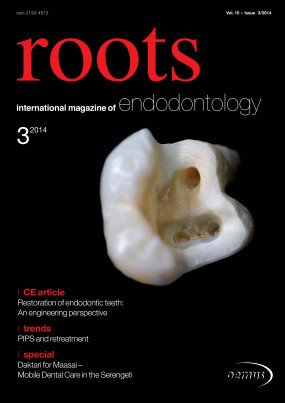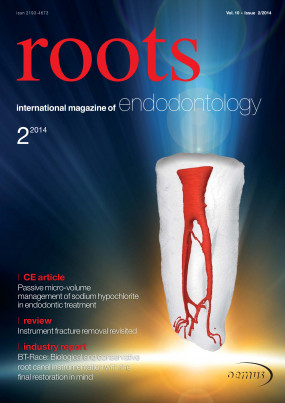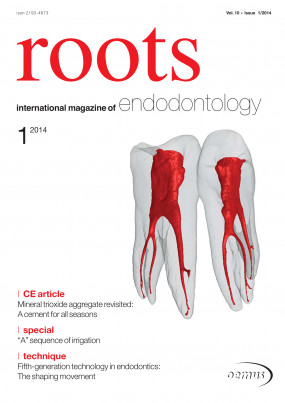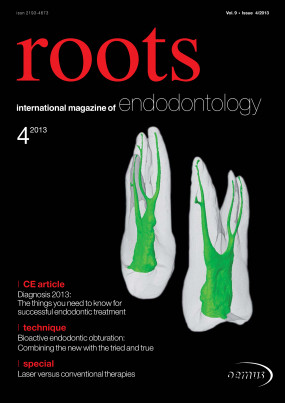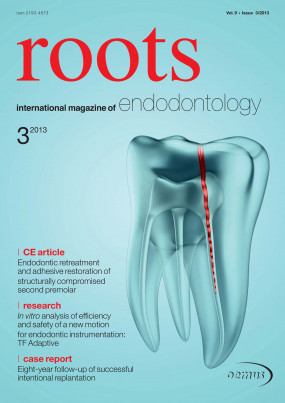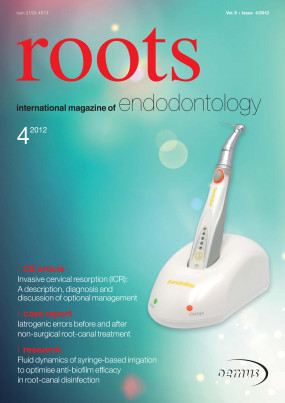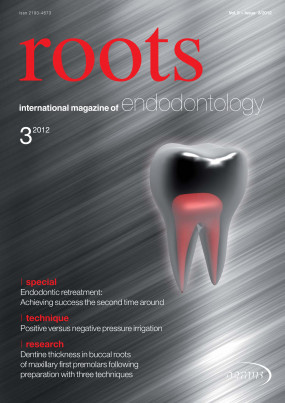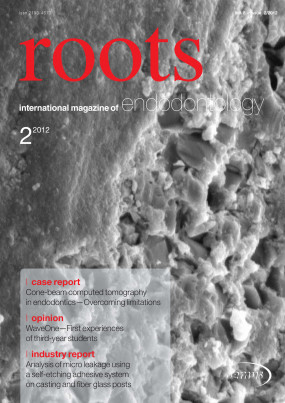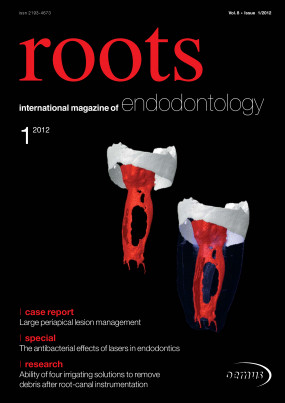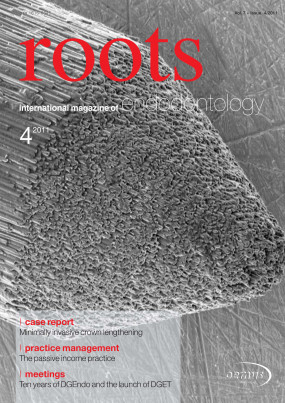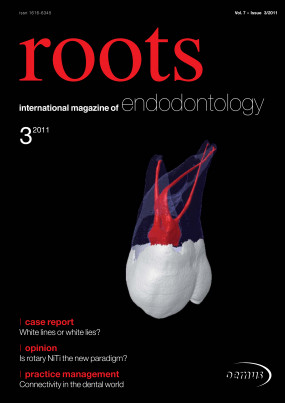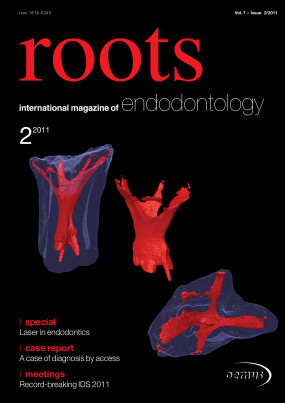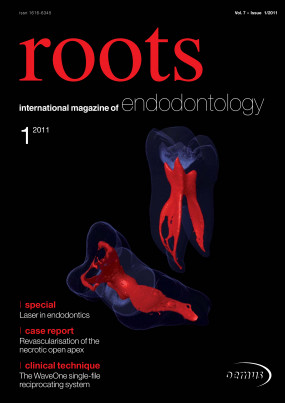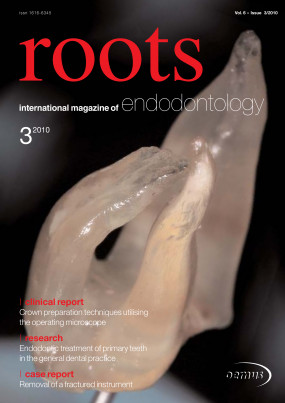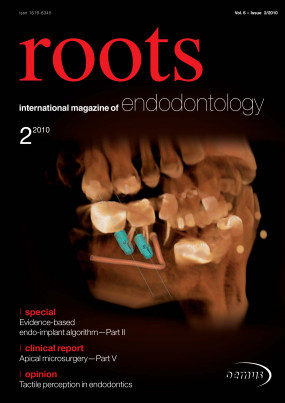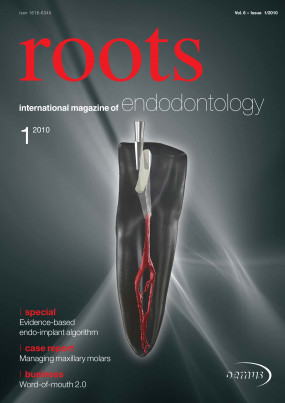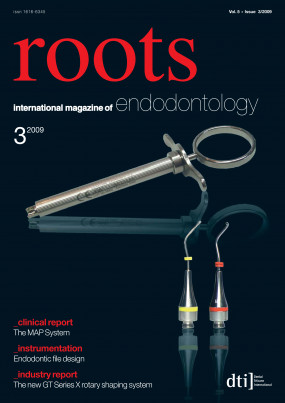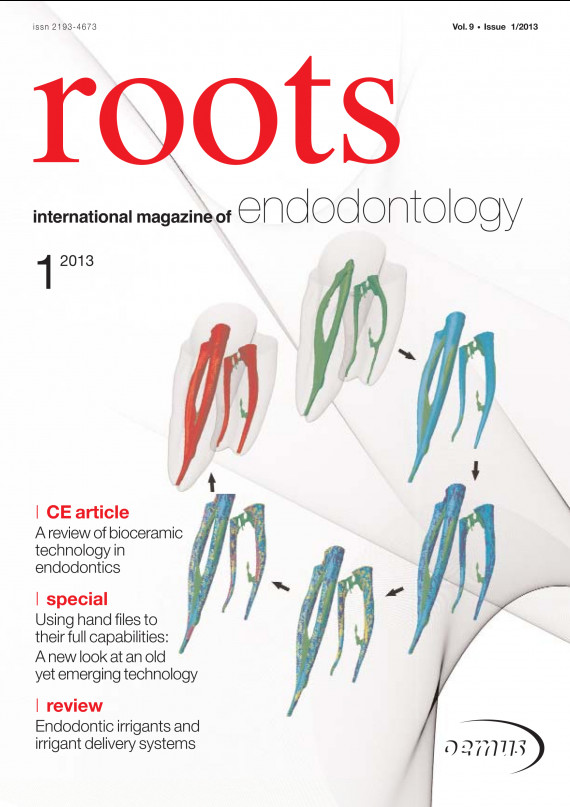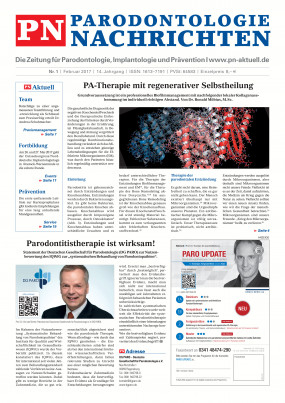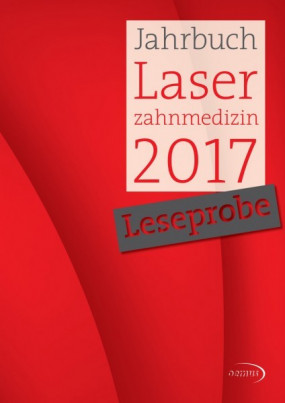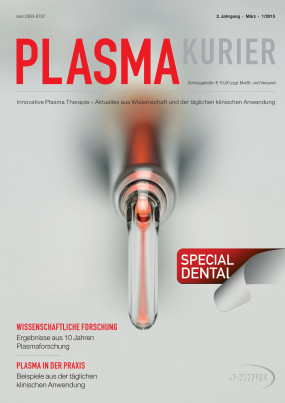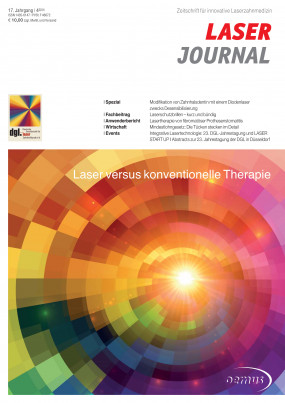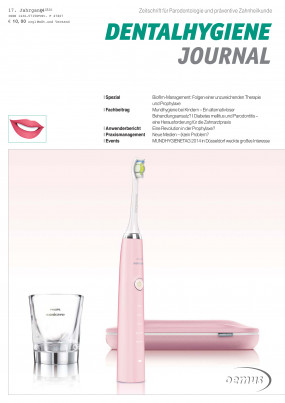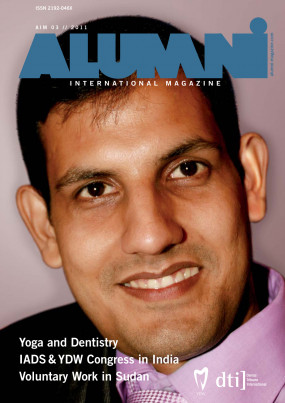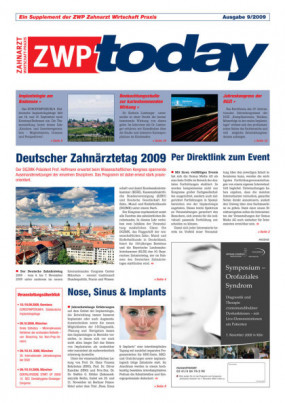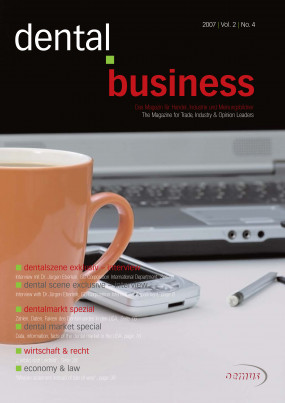Inhaltsverzeichnis
3
Editorial
Prof. Marco Versiani, DDS, MS, PhD Major Dental Officer (Brazilian Military Police)Specialist in endodontics, didactics and bioethics
On 5 March, the Root Canal Anatomy Project (http://rootcanalanatomy.blogspot.com) will have been online for two years. This project was conceived in the Laboratory of Endodontics of the University of São Paulo, Brazil. During this time, the blog has registered over 210,000 visitors from 161 countries and the videos have been watched more than 50,000 times. Considering that root-canal anatomy is a specific subject in dentistry, we believe that our aim is being achieved.
6
Since bioceramic technology was introduced to endodontics, the response has been exceptional. As more and more practitioners have thought through the process, they have been able to see not only the clear benefits of this technology in endodontics, but they are now asking how this technology can be applied to other aspects of dentistry. The application of bioceramic technology has not only changed endo-dontics both surgically and non surgically, it has also begun to change the way we treatment plan our patients. As a result of bioceramic technology, we now have the ability to save more teeth in a predictable fashion, while, in addition, improving their long-term prognosis. The option of “saving the natural dentition” is now back on the table.
14
Using hand files to their full capabilities: A new look at an old yet emerging technology
Dr Rich Mounce, USA
Despite wide global acceptance of rotary nickel titanium (RNT) canal enlargement, hand files remain central to endodontic practice. It can be argued persuasively that proper canal negotiation and glide path creation are key ingredients to successful long-term treatment, along with adequate and appropriate irrigation, canal preparation, coronal seal, etc. Simply stated, after the preparatory steps of straight-line access and removal of the cervical dentinal triangle with orifice openers, if the canal is not properly negotiated and a glide path prepared prior to RNT enlargement, cleaning and shaping procedures cannot be optimal.
20
There are many rotary systems on the dental market at present. All of these systems are relatively similar, except for one. This system is called Twisted Files (TF) and it was introduced to the dental market in 2008. I am glad to have been among the first users of this system, which has changed the endodontic world. How does this system differ from other rotary systems? Firstly, by its unique machining—which is a SybronEndo patent.
24
INITIAL®: The beginning of a new era for endodontic instrumentation?
Dr Matthieu Pérard, Dr Justine Le Clerc, Prof. Pierre Colon & Prof. Jean-Marie Vulcain, France
In the past three decades, numerous endodontic instruments have been developed to replace traditional steel manual instruments (pulp broaches, K- and H-files), yet sometimes these developments have not offered the clinical benefits expected. The eighties saw the appearance of more sophisticated instruments, still steel, such as the Unifile (DENTSPLY), Canal Master U (BRASSELER), Rispi Sonic and Shaper Sonic (MICRO-MEGA). The nineties and the new century saw an explosion of NiTi instruments; endodontic instrument shapes and methods multiplied to the point that it was sometimes difficult to keep up. Some developments were quickly forgotten, others were widely adopted and remain standards.
30
Endodontic treatment is a predictable procedure with high success rates. Success depends on a number of factors, including appropriate instrumentation, successful irrigation and decontamination of the root-canal space to the apices and in areas such as isthmuses. These steps must be followed by complete obturation of the root canals, and placement of a coronal seal, prior to restorative treatment.
38
The innovative Stropko Irrigator has essential uses in any discipline of dentistry: to make restorative, endodontic, periodontal, surgical, and micro-adhesive dentistry, as well as orthodontic and implant procedures, easier by constantly maintaining a clean field with uninterrupted vision. The Stropko Irrigator (Fig. 1) allows numerous advantages over the standard dental tips.
